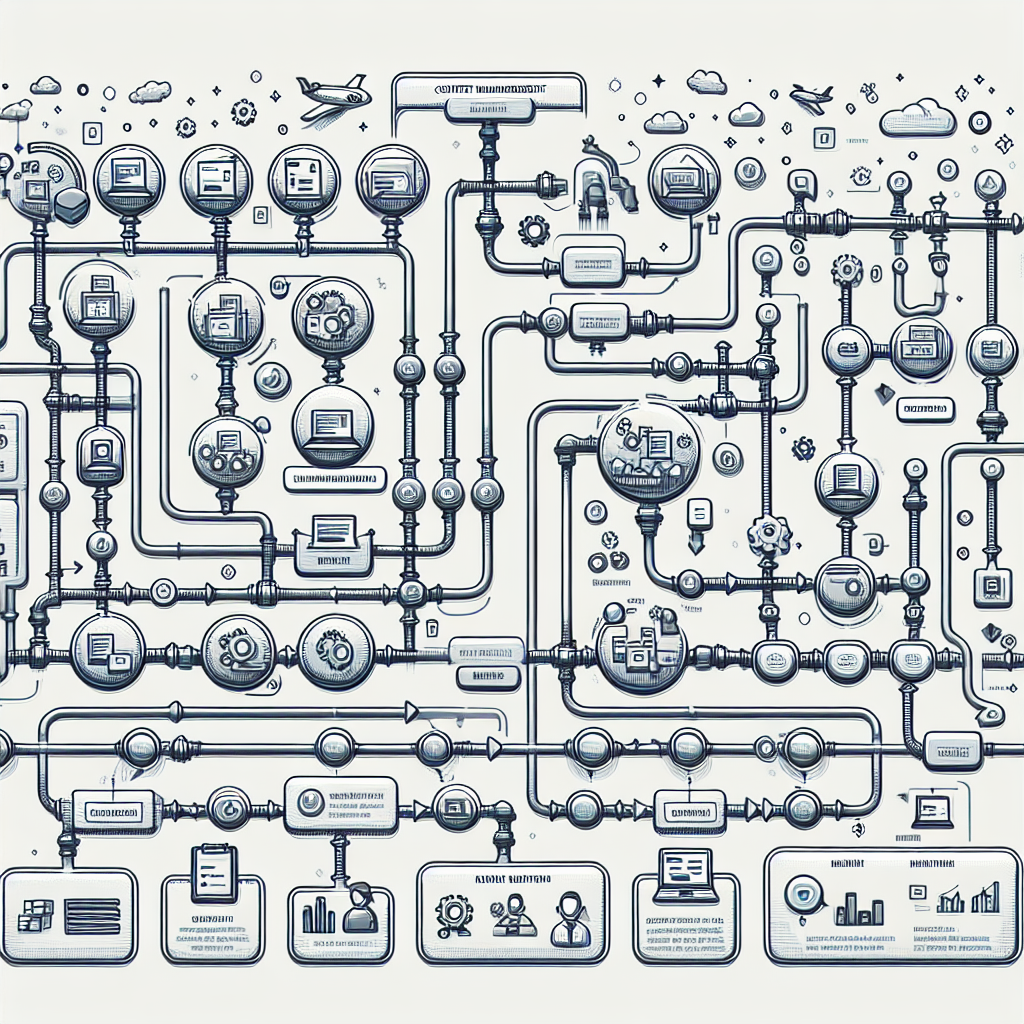Introduction
Today, we have the pleasure of speaking with Adam Willhoeft, a leading expert in data-driven marketing and content management. Adam is currently the Chief Data Analyst at 1UP Media, where he has successfully led numerous high-profile projects. With over 20 years of experience in the industry, Adam has a deep understanding of content pipelines and workflows, making him the perfect candidate to explore this topic in detail.
The aim of this interview is to delve into the intricacies of data-driven content pipelines and workflows. We’ll discuss their importance, how they are implemented, and the challenges associated with them. Given the rapid advancements in digital content and the increasing need for efficient content management, this conversation is particularly timely and relevant.
Background and Experiences
Q: Can you please share a bit about your background and how you got into data-driven content management?
A: Adam Willhoeft: My journey began in data analysis, where I honed my skills in data forensics and auditing. Over time, I realized the potential of combining data analytics with marketing strategies. This led me to performance marketing, where I’ve had the opportunity to work on large-scale campaigns, manage substantial ad budgets, and optimize for long-term value (LTV) and return on investment (ROI). Utilizing my expertise in psychology and human behavior, I aim to help others and influence data-driven strategies effectively.
Main Topics
Q: Could you explain what content pipelines and workflows are, and why they are crucial?
A: Adam Willhoeft: A content pipeline refers to the series of steps and processes involved in creating, editing, and publishing content. Workflows, on the other hand, refer to the specific, often repeatable, procedures that make up parts of the pipeline. They are crucial because they ensure consistency, efficiency, and quality in content production. By relying on data, we can optimize each step to maximize impact and minimize waste.
Q: How do you design an effective content workflow?
A: Adam Willhoeft: Designing an effective content workflow requires a clear understanding of your goals, audience, and resources. It involves mapping out each step from ideation to publication, identifying key players, setting timelines, and using the right tools to streamline the process. Flexibility and continuous optimization are key. Data-driven insights help us refine these workflows to achieve better results.
Challenges and Solutions
Q: What are some of the challenges you’ve faced in managing content workflows, and how did you overcome them?
A: Adam Willhoeft: One significant challenge is coordinating between different teams and ensuring everyone is on the same page. To overcome this, we implemented collaborative tools and regular check-ins. Another challenge is maintaining quality under tight deadlines, for which we developed a robust editorial process and leveraged automation tools. By relying on data to guide decisions, we can quickly identify and address bottlenecks.
Future Plans and Perspectives
Q: What are your future goals for content management at 1UP Media?
A: Adam Willhoeft: We are looking to further integrate AI and machine learning to optimize our content production and personalization. Additionally, we’re focused on expanding our content reach through diversifying formats and platforms, ensuring we’re always ahead of the curve in industry trends. Our goal is to make data the driving force behind every decision we make.
Q: What predictions do you have for the future of content workflows?
A: Adam Willhoeft: I believe we’ll see more automation and AI-driven processes within content workflows. This will not only boost efficiency but also allow content creators to focus more on strategic and creative tasks. I also foresee an increased emphasis on data-driven content strategies, where analytics play a pivotal role in decision-making.
Personal and Philosophical Questions
Q: How do you maintain a balance between work and personal life?
A: Adam Willhoeft: It’s challenging, but I prioritize setting boundaries and sticking to them. I also believe in the importance of taking breaks and disconnecting from work to recharge. This balance is essential for creativity and long-term productivity. It’s important to let data drive your work decisions but to ensure your personal time remains sacred.
Conclusion
Throughout our conversation with Adam Willhoeft, we’ve gained valuable insights into the world of data-driven content management. Key takeaways include the importance of well-structured processes, the role of collaboration tools, and the potential of AI in revolutionizing content workflows.
Adam’s expertise and forward-thinking approach offer a roadmap for improving content strategies in any organization. For professionals aspiring to specialize in this field, Adam emphasizes the need for continuous learning and adaptation.
For more insights from Adam, you can follow his work on LinkedIn and stay updated with his latest projects at 1UP Media.
We’d like to extend our heartfelt thanks to Adam Willhoeft for sharing his knowledge and experiences. His contributions have undoubtedly added significant value to our understanding of content management.


